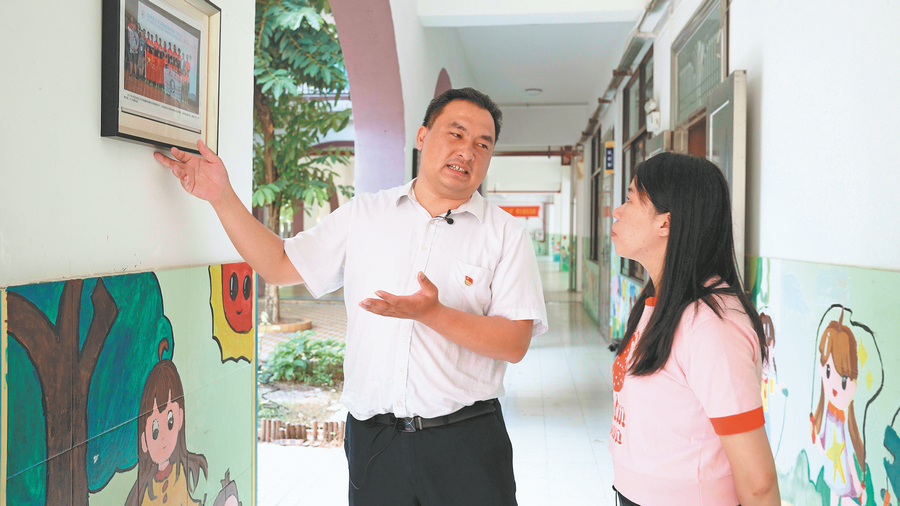

Inspirational teacher institutes skip rope program, which is not only changing the fortunes of his students but also helping his underdeveloped school, Huang Xuemeng reports in Guangzhou.
"We had been in training for three years — day and night, and I'd lost sleep for three months before the competition," Lai Xuanzhi, 36, who is now the vice-principal of Qixing Primary School in Guangzhou, Guangdong province, recalls the first time he led the school jump rope team in an international competition.
It was the first World Inter-School Rope Competition which was held in Dubai in 2015. Lai's team skipped through, winning 27 of the total of 28 golds and the title of team champion — China's first jump rope team championship ever. Lai watched the teens standing on the podium singing the national anthem with tears running down their faces. It was at that moment Lai came to realize that for students who are educated in a village school, rope-jumping could not only be part of physical education but also provide access to a brighter future.
Lai graduated from Wuhan Sports University, majoring in basketball. In 2010, the new graduate was employed as a PE teacher at Qixing Primary School — a village school in the suburbs of Guangzhou. But the job, his first, posed a challenge.
"I'd never thought that there could be such a small, underprivileged school in such a developed city like Guangzhou," Lai recalls.
At that time, there were only 143 students and 11 faculty members at the school, and Lai was the first professional PE teacher with a university degree that the school had ever recruited.
Lacking facilities and funds, the school wasn't set up to hold ordinary PE courses, such as basketball, soccer and track and field, so the ambitious young teacher had to shift his focus to something that was cheaper and easier to organize. He discovered rope-jumping.
Teaching it, however, was a challenge to Lai, with a degree in basketball coaching. He put forth great effort in studying different jump rope techniques from videos online. To increase the skipping speed, Lai invented a new style of half-squat skipping. He also got inspiration from motorcycle brake cables and made some special ropes for the students to use, which were thinner and lighter than ordinary jump ropes.
Starting from scratch, Lai has coached 36 jump rope world champions since 2012. Competing in various games at home and abroad, the young ropers broke 11 world records in total, including the most single skips and double unders (where the rope passes under the feet twice in a single jump) and the most skips in a medley jump rope relay, among others. In the team's first overseas competition, team member Cen Xiaolin, 11 years old at the time, set up two world records — the most skips in 30 seconds and the most in three minutes. The talented roper didn't stop pursuing his dream after graduation. At the 2019 World Jump Rope Championship in Norway, Cen became known as having the "world's most powerful thighs "after he smashed five world records, including jumping 1,141 times in three minutes.
Now, Lai's jump rope team has over 200 members who are trained in six smaller groups. They follow the traditional training schedule — 90 minutes before the morning class and 90 minutes in the afternoon. The team members need to go through two years of training, throughout their first and second grades before becoming full-time members.
There are also academic requirements — only the top 15 students in their classes are qualified to join the team.
"The students should develop in a well-rounded way. Their achievements in rope-jumping should not come at the expense of academic effort. Actually, it is more of an impetus to complete their school work," Lai says.
To help the students develop well-rounded personalities was one of the initial purposes of starting the rope jump program, Lai explains. Coming from local rural and migrant families, the students at Qixing Primary School "often carried a sense of inferiority". The medals and honors they won through rope-jumping have helped them build confidence.